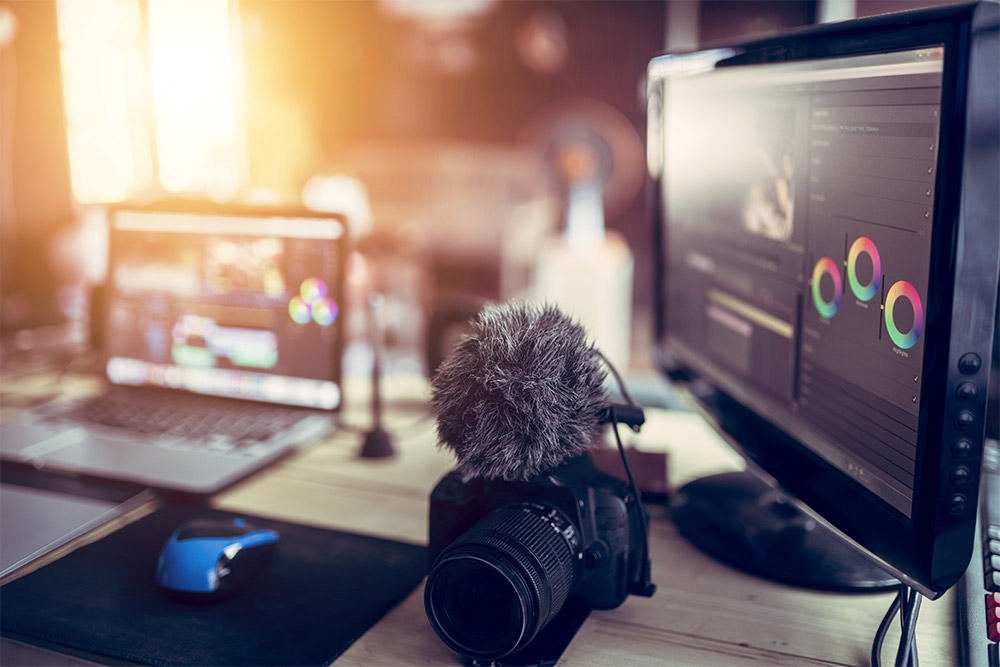
Video Production Basics
Before you dive into producing video content, it’s vital to familiarize yourself with the building
blocks of the medium, including the phases of production. Broken down into its most basic steps, the timeline of video production consists of three phases: pre-production, production, and post-production. Let’s take a look at what goes into each of these complex stages.
Pre-Production for Video Projects
Also called the “development” stage, pre-production is focused on planning. This phase is
crucial to achieving the desired video product and ensuring smooth operations during production.
Before putting pen to paper, your focus should be on defining your target audience, your
overarching message, and, of equal importance, your budget. If you know your audience and
message already, great! If not, take some time to brainstorm with your team and source some
inspiration.
A budget for a successful video campaign will take into account location rental and permits, film, audio, and lighting equipment required, crew hires, costumes, hair and makeup, craft services, and of course, talent. And don’t forget to factor in the amount of time you will require to complete your project.
Once you have at least a general budget nailed down, you can begin to write and storyboard your script. By working in this order, your writers will have a sense of the project’s scale and can craft a story accordingly. Of course, if budget is not a constraint, feel free to have your writers let their imagination run wild!
Video Production
Here comes the fun part! Once your plan is bullet-proof, you can start rolling. This phase is left
mostly up to the director and crew to manage, but there are still important roles to be filled.
For example, every set needs someone in charge of health and safety, especially with the reality of COVID. If you are outsourcing talent and crew, rapid tests should be obtained 24 hours before they arrive on set. For larger productions, a medic should be present. Other things to watch out for include loose wires and other equipment-related hazards.
Remember to take B-roll so you don’t come up short in the editing phase. Stay on schedule to the best of your ability and make sure to allow time for setting up the shoot and breaking down afterward.
Post-Production Adds the Finishing Touch to Video
If your shoot is several days long, you can begin post-production while film is still being
captured. Post-production includes editing, visual effects, and the addition of music and titles.
This is where your video project takes shape. Usually, this calls for a different crew than
the one used for production, and should have been included in the initial budget.
If you’ve outsourced post-production, discuss the turnaround time with the chosen company to make sure the timeline meets your needs. If editing is happening simultaneously with production, adjustments can be made in real time to avoid re-shoots. While video production can be a long and intensive undertaking, the payoff is considerable.
With a solid plan and a trusted team, you will be well on your way to making impactful, visually-
stunning video content!